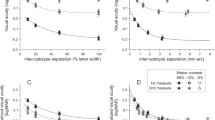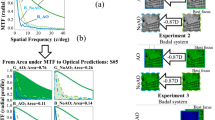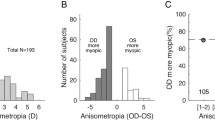Abstract
For the rapid detection of defective colour vision in personnel untrained in the use of optical instruments, an anomaloscope has been constructed in which a bipartite test field of 18 mm. diameter is viewed direct with both eyes. One half of the field is illuminated by light passing through a narrow-cut yellow filter (Ilford No. 812, maximum transmission at 580 mµ), and the other half by a variable mixture of the lights from a narrow-cut red filter (Ilfosrd No. 608, transmitting above 640 mµ) and a narrow-cut green filter (Ilford No. 807, maximum transmission at 530 mµ). The instrument was designed so that the proportions of red and green light in the mixed half of the field could be obtained with fair accuracy from the reading of a single scale, and a control was provided for adjusting the brightness of the other half of the field. The brightness of the field was about 10 candles per sq. metre, permitting observations to be made in artificial light or dim daylight.
This is a preview of subscription content, access via your institution
Access options
Subscribe to this journal
Receive 51 print issues and online access
$199.00 per year
only $3.90 per issue
Buy this article
- Purchase on Springer Link
- Instant access to full article PDF
Prices may be subject to local taxes which are calculated during checkout
Similar content being viewed by others
Author information
Authors and Affiliations
Rights and permissions
About this article
Cite this article
HORNER, R., PURSLOW, E. Dependence of Anomaloscope Matching on Viewing Distance or Field Size. Nature 160, 23–24 (1947). https://doi.org/10.1038/160023a0
Issue Date:
DOI: https://doi.org/10.1038/160023a0
This article is cited by
-
The polychromatic theory
Documenta Ophthalmologica (1949)
-
Dependence of Anomaloscope Matching on Viewing-Distance or Field-Size
Nature (1948)
-
Dependence of Anomaloscope Matching on Viewing Distance or Field Size
Nature (1947)
Comments
By submitting a comment you agree to abide by our Terms and Community Guidelines. If you find something abusive or that does not comply with our terms or guidelines please flag it as inappropriate.



